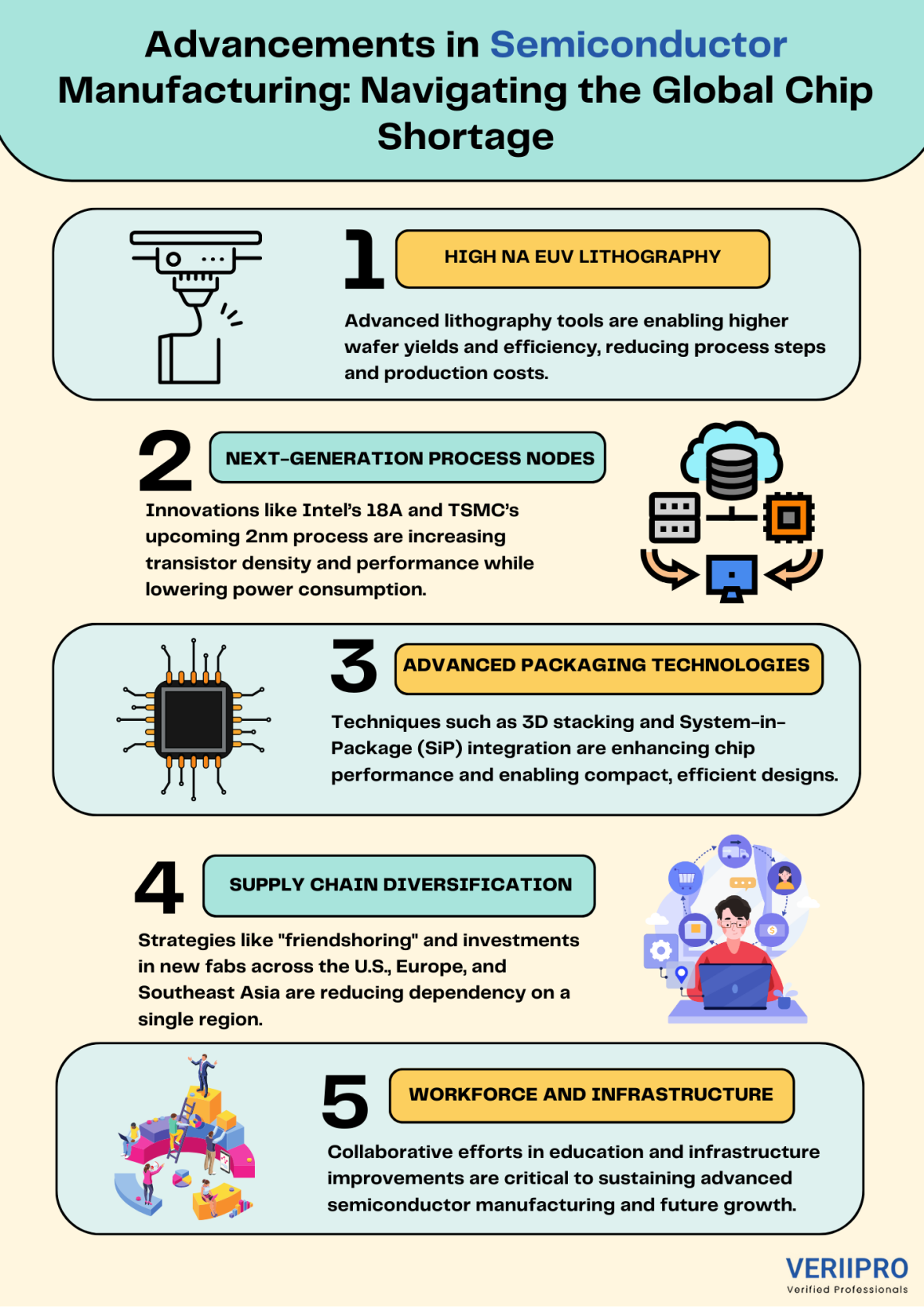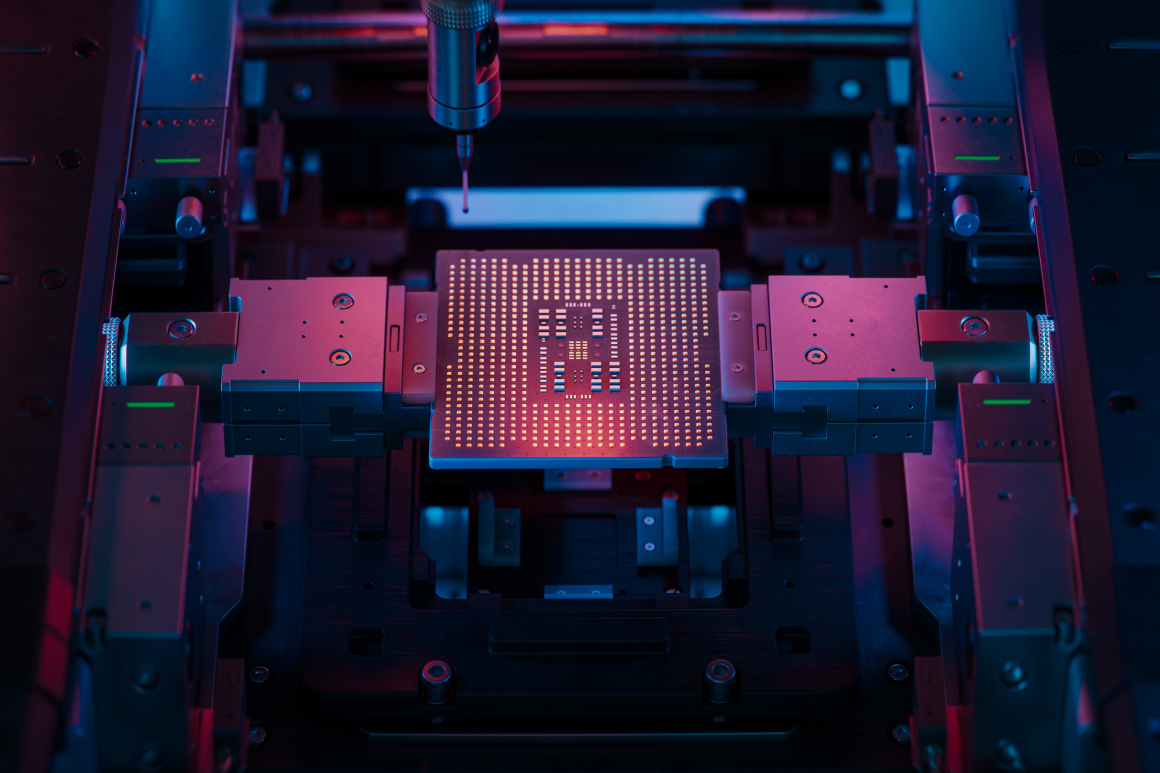Advancements in Semiconductor Manufacturing: Navigating the Global Chip Shortage
The global chip shortage that began in 2020 has reverberated across industries—from automotive and consumer electronics to telecommunications and defense—exposing vulnerabilities in supply chains and prompting a renewed focus on innovation in semiconductor manufacturing. In response, industry leaders are investing heavily in next-generation processes, advanced lithography techniques, and improved packaging technologies to overcome supply disruptions and meet growing demand.

A New Era in Chip Production
Recent breakthroughs in semiconductor fabrication are driving a transformation in the way chips are made. Companies like Intel and TSMC have recently reported significant advancements using high numerical aperture (NA) extreme ultraviolet (EUV) lithography. For instance, Intel’s new high NA tools have enabled the production of 30,000 wafers in a single quarter—a leap forward in efficiency that reduces the need for multiple exposures and streamlines the manufacturing process.
This technological leap is critical as chipmakers push further into sub-5nm territory with processes like TSMC’s upcoming 2nm node and Intel’s 18A process. Such advancements not only boost transistor density and performance but also reduce power consumption—key factors in meeting the surging demands of high-performance computing, artificial intelligence (AI), and data centers.
Enhancing Yield and Efficiency
One of the major challenges in semiconductor manufacturing is achieving high yield—the percentage of usable chips produced in a batch. Innovations in lithography and process integration have led to improvements that help manufacturers overcome defects and improve yield rates. ASML’s high NA EUV machines, for example, allow for finer patterning with fewer process steps. This results in lower production costs and higher yields, making the manufacturing process more resilient against global supply disruptions.
Additionally, advanced packaging techniques such as 3D stacking and system-in-package (SiP) technologies are revolutionizing chip performance. By integrating multiple chips into a single package, these methods enhance computational efficiency and reduce the overall footprint, which is critical in applications ranging from smartphones to autonomous vehicles.
Diversifying and Strengthening Supply Chains
The chip shortage underscored the risks of an overreliance on a few geographical regions for semiconductor production. In response, many companies are adopting a “friendshoring” or “China Plus One” strategy, diversifying their supply chains by investing in new facilities across North America, Europe, and Southeast Asia. The CHIPS Act, for example, has spurred significant domestic investments. TSMC’s new fab in Arizona and Samsung’s major expansion in Texas are part of a broader push to bring advanced manufacturing back to the United States, reducing dependency on overseas suppliers.
Global partnerships are also playing a crucial role. Collaborations between chipmakers and equipment suppliers like ASML are crucial in maintaining the technological edge required to produce cutting-edge chips. Moreover, investments in research and development—bolstered by both government subsidies and private capital—are driving innovation in semiconductor materials and processes that promise to mitigate future shortages.
Addressing Talent and Infrastructure Challenges
Advancements in semiconductor manufacturing are not solely about technology; they also depend on overcoming workforce shortages and infrastructure challenges. The complexity of next-generation processes demands a highly skilled workforce, yet many regions face a deficit of engineers and technicians trained in the latest fabrication techniques. To address this, companies and governments are collaborating on workforce development programs and investing in education initiatives. These efforts are critical for sustaining long-term growth in the semiconductor industry.
Infrastructure improvements are also underway. For instance, new fabs and packaging centers in the United States and Europe are designed with state-of-the-art facilities to support high-precision manufacturing processes. These investments are expected to not only ease the current chip shortage but also to build a more robust and resilient semiconductor ecosystem for the future.
Looking Ahead
While challenges remain, the combination of technological innovation, strategic investments, and diversified supply chains is setting the stage for a more resilient semiconductor industry. As companies continue to refine processes and expand production capabilities, the industry is poised to rebound from the global chip shortage and meet the burgeoning demands of the AI and high-performance computing markets.
The chip shortage may have disrupted production lines and slowed economic activity over the past few years, but the advancements in manufacturing technology are turning that setback into an opportunity. With increased yields, reduced power consumption, and the development of advanced nodes like 2nm and 3nm, the semiconductor industry is not only navigating the current crisis—it’s also paving the way for a more innovative and secure future.
Looking for opportunities in tech innovation? VeriiPro is here to help!




